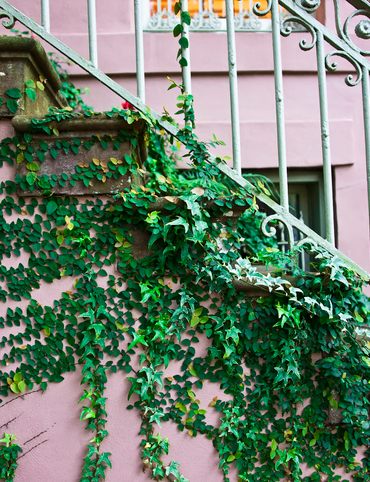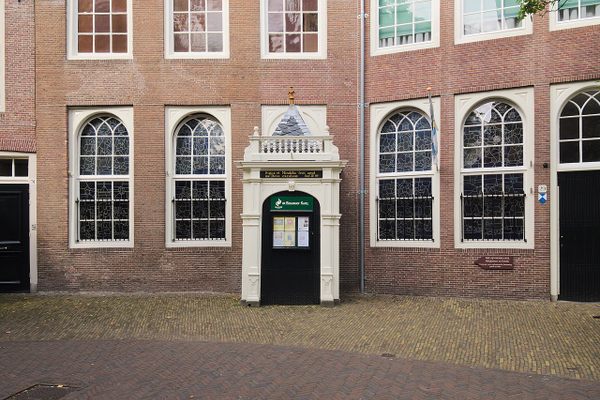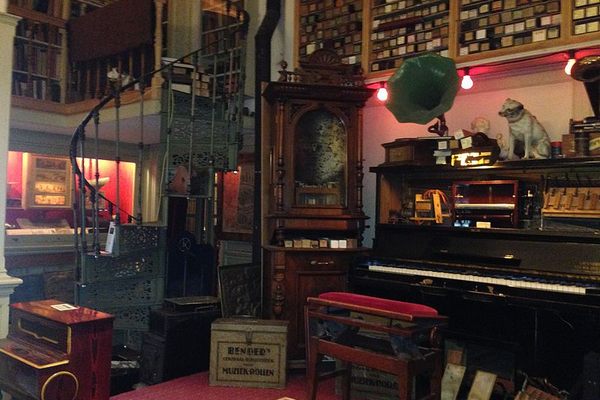Weekend Guides for the Curious Traveler
Amsterdam
Forge your own path in this tourist magnet, toward places that are less crowded but no less wondrous.
Peel back multiple layers of history with every turn.
1. Begijnhof Chapel
It’s always nice to start your day with some old-time religion. Plus, you’ll miss the crowds. One of the city’s oldest inner courtyards, the Begijnhof, is just off the Spui Book Square with its many cafes and bookstores. The Beguines were a lay Catholic religious order of women who sought to imitate Christ: living in poverty and devotion, and for the care of others. And hidden in the hidden courtyard where they lived was a hidden church. Upon exiting the chapel, don’t trip over the grave of a former resident Beguine hidden under a slab of red granite in the gutter. Clue: it’s often adorned with flowers. Today, the courtyard’s residents are no longer nuns, but do remain strictly female.
Begijnhof 29, 1012 WT Amsterdam, Netherlands

2. Amsterdam Oersoep
Oersoep, which means “primordial soup,” is an almost 5,000 square foot mosaic of Italian glass that pays tribute to the city's famed canals. It also tells a visual story of how all of Earth’s lifeforms originated from water (after, perhaps, first arriving from outer space). Besides additional images associated with the Dutch city’s iconic waterways, the alleyway also features fish-eyed Art Deco mirrors and chandeliers made from recycled bicycle parts. The floors, which were made with traditional Italian Terrazzo, were designed with patterns that mimic those typically found at archaeological excavations. In short: trippy.
Beurspassage 1, 1012 LW Amsterdam, Netherlands
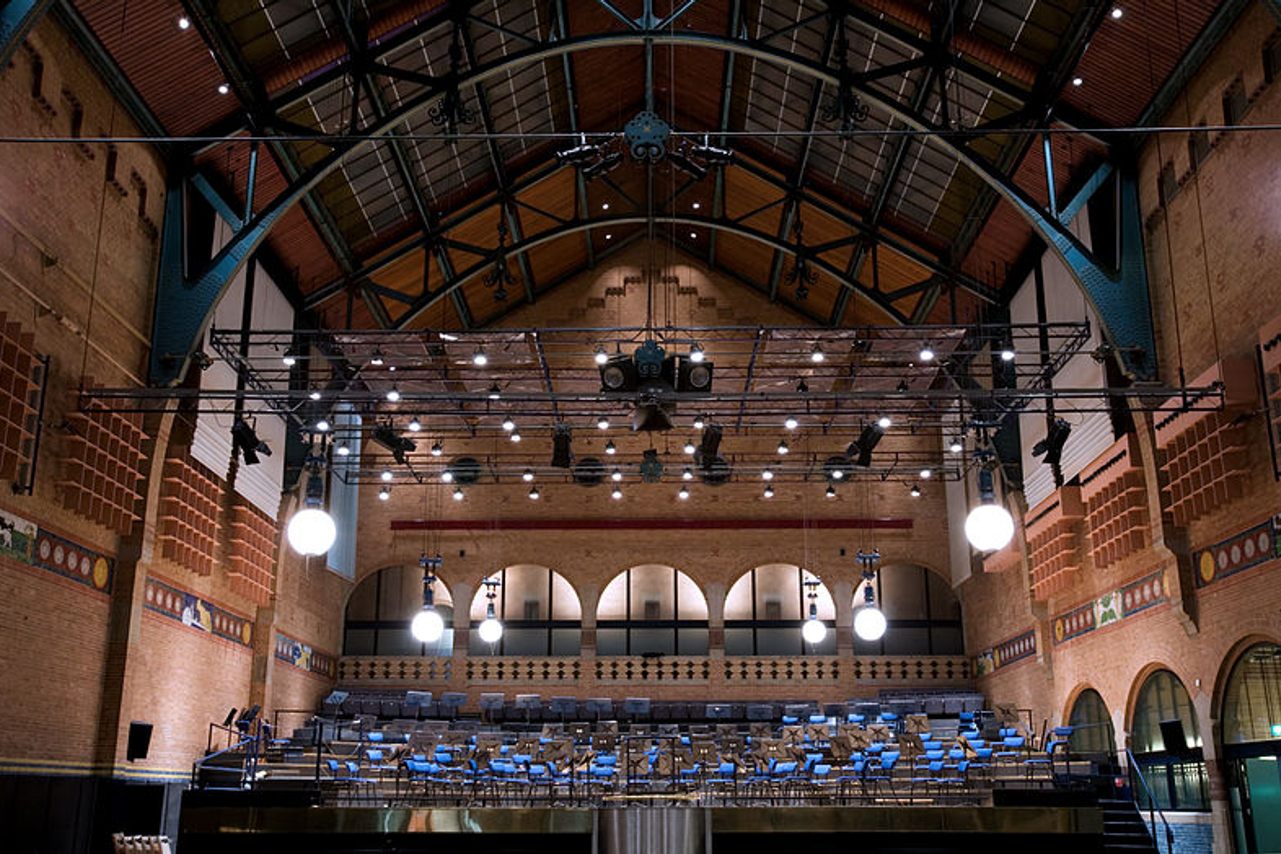
3. Beurs van Berlage
Just across from Oersoep you'll find the stock exchange building, designed by the local architect H.P. Berlage and considered the city’s first modern building. Completed in 1903, the structure was stripped of all the “Neo” ornamentations of the 19th century and built up out of clean lines. As such, it formed the blueprint for the more swoopy lines of the Amsterdam School of architecture that soon followed. Today, Beurs van Berlage is mainly a congress and exhibition center. While architectural tours can be arranged, you can also get a sense of Berlage’s work by setting down in one of the building’s two cafes.
Damrak 243, 1012 ZJ Amsterdam, Netherlands
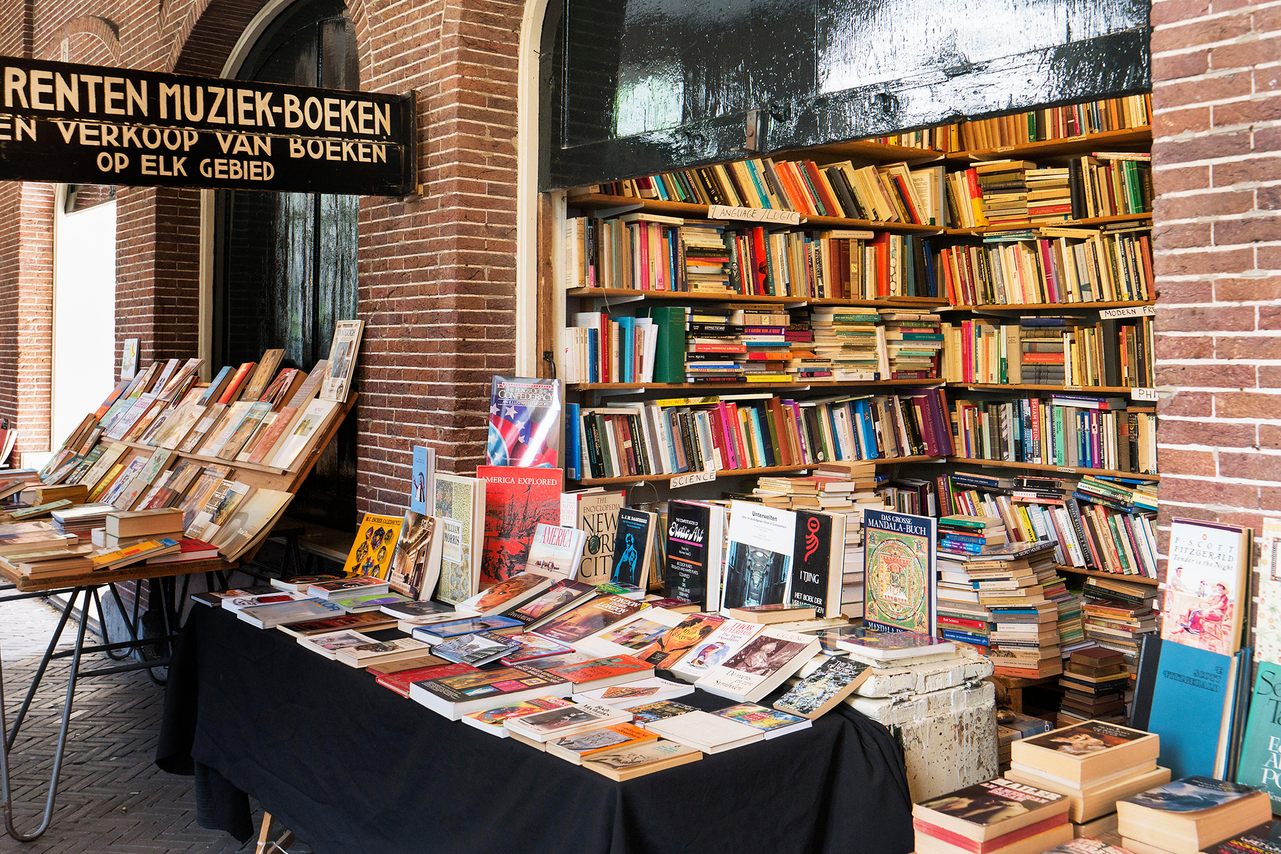
4. Oudemanhuispoort
If you enter Oudemanhuispoort through the Oudezijds Achterburgwal side, you will get one allusion to this passage’s past. Overhead, chiseled into a pediment, is a set of spectacles, referring to old age. Indeed, “Old Man’s House Passage” once acted as part of the country’s first senior citizens' home back in the 18th century. Now part of the University of Amsterdam, it has a 400-year-old history that has seen it home to a convent, a hospital for cholera victims, an arts academy, and a museum that formed the basis for the Rijksmuseum and its famous collection of Rembrandts and Vermeers. Since 1886, the stalls of this covered walkway has been selling secondhand prints, sheet music, and books. The stalls are currently run by an older generation of fellows—many with spectacles—who are only too willing to share their knowledge.
Oudemanhuispoort 1A, 1012 CN Amsterdam, Netherlands
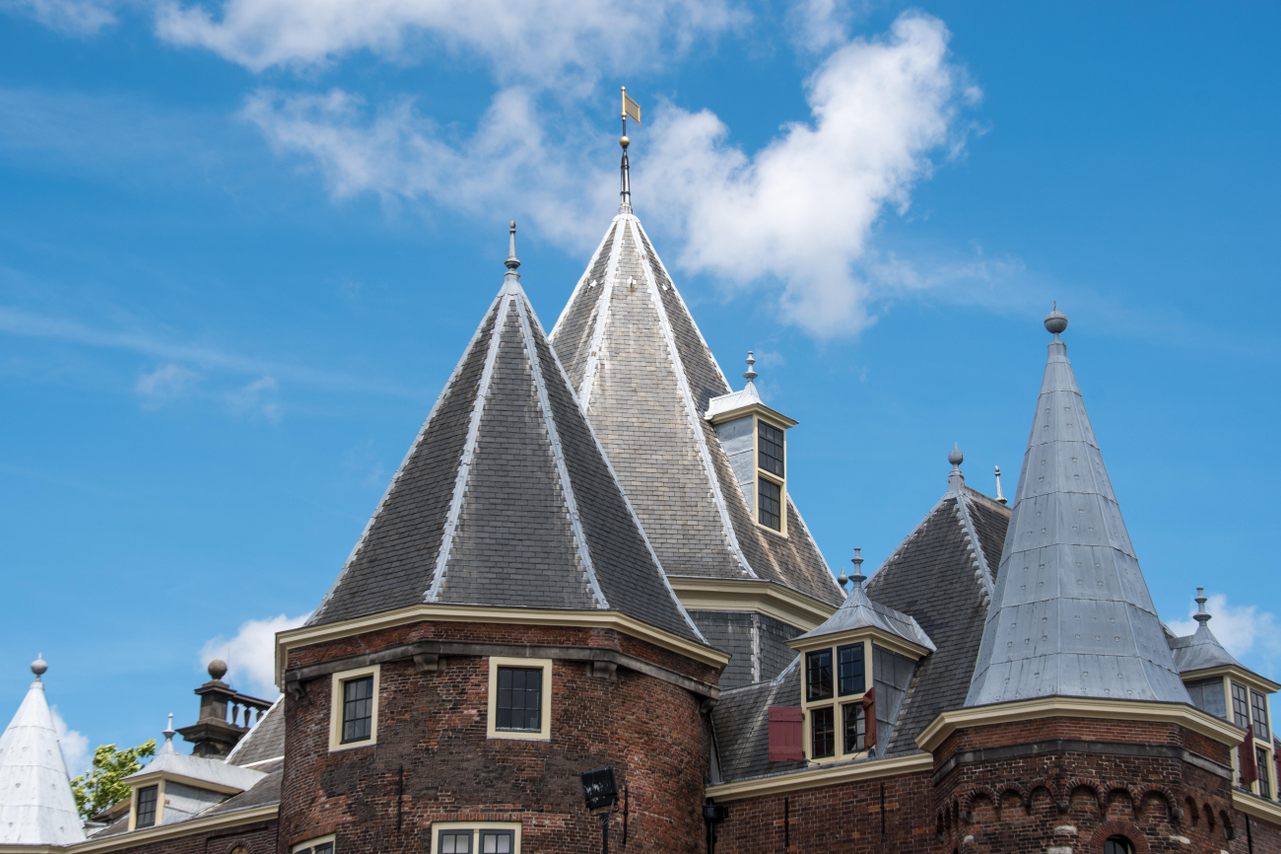
5. De Waag
Back in 1488, De Waag was built as one of city’s main city gates, which closed every night exactly at 9:30 p.m. to keep out the bandits, the poor, and the desperately diseased. By the 17th century, when the city expanded, the building became a weighing house for incoming products: tobacco, ropes, spices, artillery, slave chains, etc. Towers were built to accommodate various municipal militias and guilds, including one for the masons who did all the evocative decorations over the various entrances. Another tower housed the Surgeons' Guild and its Theatrum Anatomicum, which hosted public dissections and formed the setting for Rembrandt’s famed The Anatomy Lesson of Dr. Nicolaes Tulp. So it’s squishingly fitting that this tower is now home to Fablab and its famed Bio-hacking Academy and Wetlab (open to the public on Thursdays between 4 and 8 p.m.).
Before you turn your attention to the square and its eating possibilities (perhaps grabbing a bite at Indonesian Toko Joyce, or Café Bern, whose perfectly formulated cheese fondue was invented by an actual Swiss nuclear physicist), take a moment to recall the dark history of this place during WWII, when the square was barb-wired off to enclose Jews awaiting transport to concentration camps.
Nieuwmarkt 4, 1012 CR Amsterdam, Netherlands
6. Marineterrein
A short stroll away from the chaos of the Red Light District, a new public space is emerging that drips with both history and hipness. In the 17th century, this was where the Dutch East India Company built their enforcer ships. In 1870, Vincent van Gogh lived here for a few months—while failing to become a theology student—with his uncle who was the terrain’s director. Later still, with the navy still in control, this place became ground zero for Cold War intrigue, filled with safe houses, secret listening posts, and encryption centers. All very hush-hush, the whole area was in fact blurred out on Google Maps until just a few years ago.
Today, following the sale of this land by the Ministry of Defense to the city, it remains a still-to-be-discovered hotspot known only to start-ups and foodies. The area reaches its peak as a view-worthy spot at Pension Homeland, a quirky hotel, restaurant, and brewery that retains its 1960s officer lodging stylings.
Kattenburgerstraat 7, 1018 JA Amsterdam, Netherlands
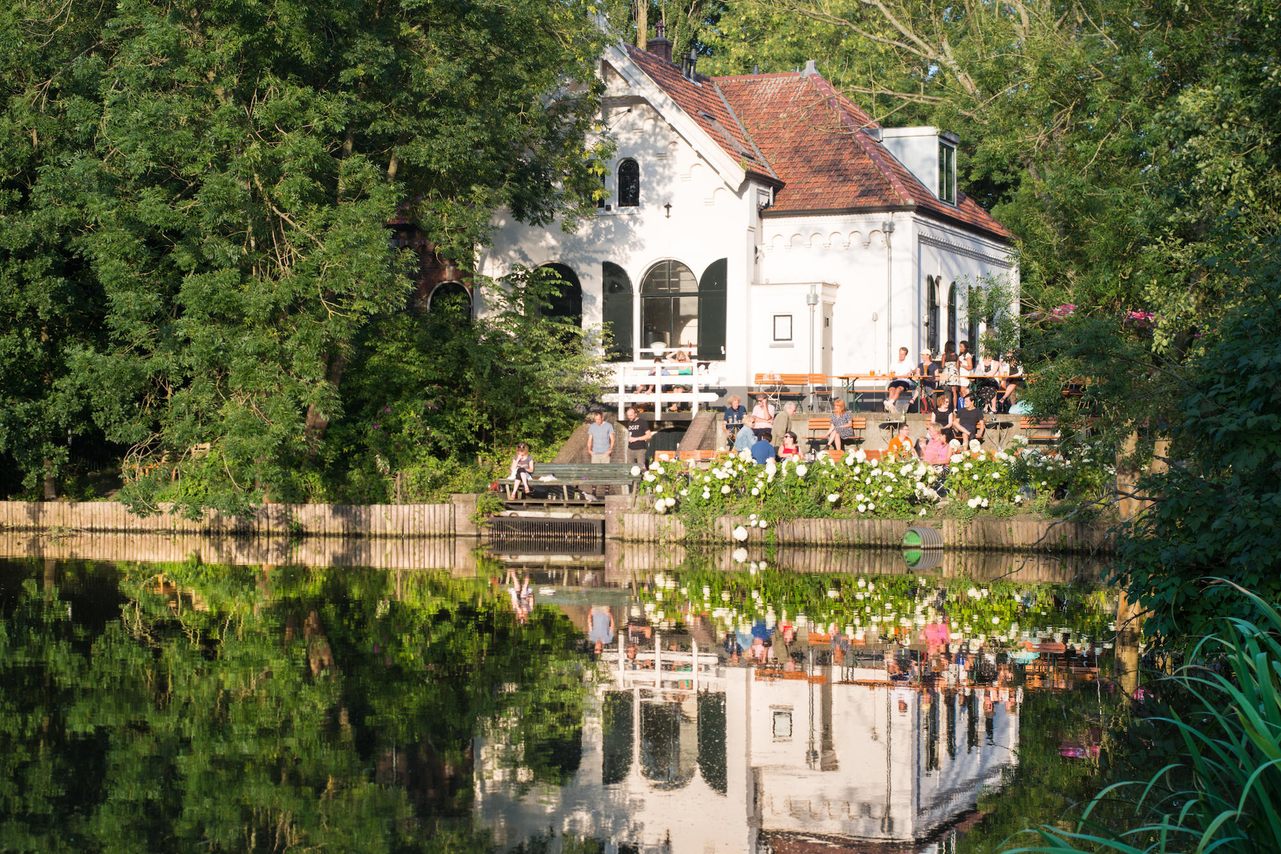
7. ‘t Nieuwe Diep
The history of jenever is a rich one. It began in 1650, when a doctor from Leiden first infused juniper berries into a spirit, and deemed it a wholesome family cure for an upset belly. Soon millions of gallons of the stuff were being shipped worldwide. Various herbs, spices, and flavors were added to create ever more spectacularly “medicinal” elixirs. Eventually the British got hold of the recipe and bastardized both the name and the product into “gin.” At Distillery ‘t Nieuwe Diep, or "The New Deep," jenever and various other elixirs are distilled in a former water mill in the middle of a lovely park—one that turns particularly magical in the sunshine (and, um, under the influence of jenever).
Flevopark 13a, 1095 KE Amsterdam, Netherlands
From edgy to the edge of town.
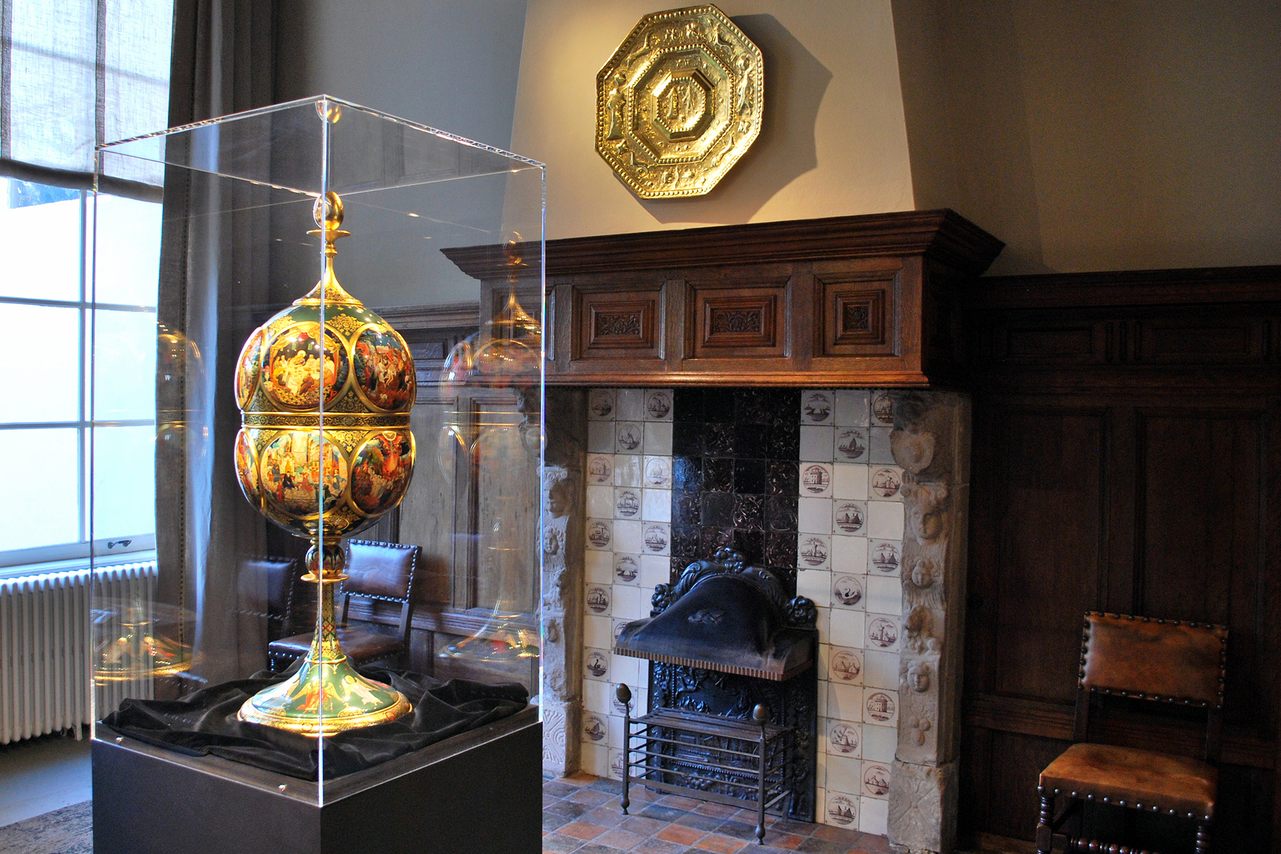
1. Bibliotheca Philosophica Hermetica
There’s nothing like starting your day with a nice cup of coffee and pondering the nature of one’s own existence. Located in Amsterdam’s iconic Canal Ring, the Bibliotheca Philosophica Hermetica, also known as the Ritman Library after its founder Joost R. Ritman, is a goldmine of early manuscripts and books on ancient mysticism, religion, and philosophy. And in its new location inside the Embassy of the Free Mind, it now even has room for a café.
The collection’s primary focus is the Hermetic tradition, and more specifically, Christian-Hermeticism. But you will also find volumes on Rosicrucianism, alchemy, gnosis, esotericism and comparative religion, Sufism, Kabbalah, anthroposophy, Freemasonry, and others lurking amid the stacks.
Keizersgracht 123, 1015 CJ Amsterdam, Netherlands
2. Pianola Museum
In a city chock-a-block with museums, one of the smallest and most delightfully eccentric is home to about 50 mechanical player pianos and almost 20,000 punched rolls of music. Volunteers are on-hand to give you a personalized tour.
The player piano was of course a very popular American invention of the late 1800s. The name Pianola was a trademark of the Aeolian Corporation of New York, but the name was broadly applied to all player pianos. So why is this museum located in the wonderfully scenic Jordaan neighborhood? At one time, there was a factory nearby that produced music rolls for player pianos. When the business went bankrupt, the factory was taken over by a certain Otto Frank, who moved in with his family to set up a business—that building is indeed now known as the Anne Frank House.
Westerstraat 106, 1015 MN Amsterdam, Netherlands
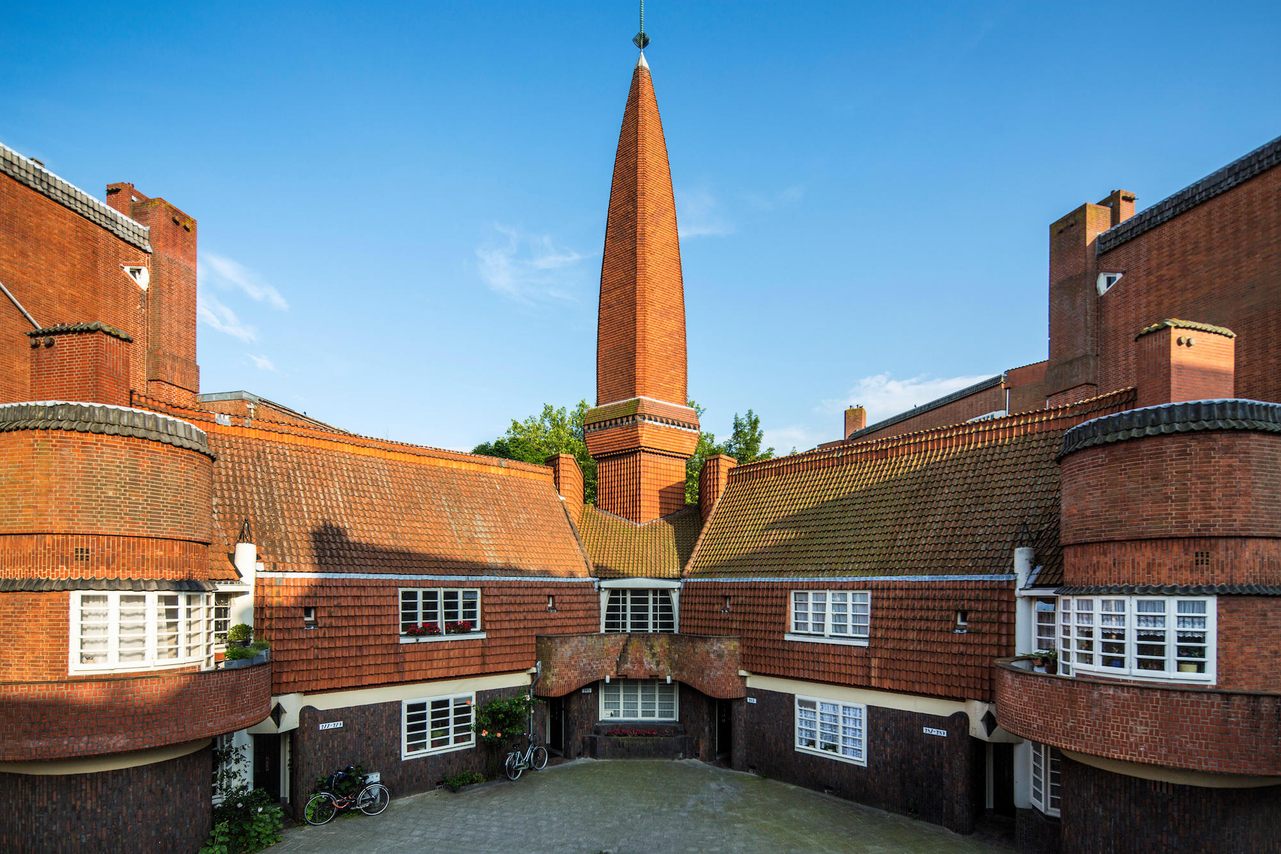
3. Het Schip
You may have already had your dose of museums, but Het Schip also has a freely accessible café and courtyard where you can sit, recover, and admire not only street furniture—including the iconic green “curl” urinal—but also the almost hallucinatory swoops of this iconic building.
During the early 20th century, Amsterdam was obsessed with building palaces— houses, institutions, and schools–for the working classes. These were often rounded and intricate brick constructions that suggested the imaginative work of the Spanish architect Antoni Gaudí. The museum is located in one of the most famous and fanciful examples. Completed in 1919, it takes up a full block and includes 102 homes and a school.
Oostzaanstraat 45, 1013 WG Amsterdam, Netherlands
4. Toon Yland Plantsoen
Every spring, the community-supported public garden Toon Yland Plantsoen—named after a still-living gardener who transformed this once barren bit of land over the last 30 years—explodes with thousands of bulb plants. It’s a kinder, gentler version of the world-famous Keukenhof, whose colored fields can be seen from outer space.
Here it’s more about inner space: a place to relax. In fact, the whole surrounding neighborhood of Western Islands is made up of kinder, gentler versions of Amsterdam’s famous sights. Golden Age warehouses, with evocative names such as Mars, Pants in Waterland, Shellfish, or simply embellished by a laughing face, echo those of the more famous Brouwersgracht. A row of gabled houses along Zandhoek could be plucked from the Canal Ring. Various drawbridges echo the iconic Skinny Bridge over the Amstel river. The area even has the perfect local café: ’t Blaauwhooft. If it all gets too cheery, head to Galgenweg (“Gallows’ road”), which used to offer an unrestricted view over the river IJ to the gallows fields of Amsterdam Noord—now home to A’DAM Lookout.
Vierwindenstraat, 1013CW Amsterdam, Netherlands

5. NDSM
You know when you’ve arrived: the free ferry (from Westerdoksdijk, or behind Central Station) passes a dark and foreboding Soviet submarine. This is NDSM, a sprawling former shipping yard, which evolved from being a squat to being where brands and festivals set up camp in the hopes that the hipness rubs off on them.
As you disembark you will see shiny neon extolling Sexyland, a conceptual nightclub that has a different organizer every night of the year. You’ll have already noticed the ship crane: it’s now a two-suite hotel complete with whirlpool. Head to the biggest warehouse you see, Art City, where inside creatives have each built their own unique studio space. The warehouse next door with the huge image of Anne Frank is set to become the world’s biggest street art museum. Yes, it’s all a bit much, so head to urban beach Pllek or the yet funkier Noorderlicht Café to unwind.
NDSM-Plein, 1033WB Amsterdam, Netherlands
6. Grand Café 1e Klas
If you ever find yourself having to kill time at Amsterdam’s Central Station, do it in style. Once the waiting room for First Class passengers, this brasserie has an original Art Nouveau interior and is perfect for lingering over a beer, a fine wine, or exploring the world of Dutch snacking options, such as deep-fried bitterballen (“bitter balls”!).
Elvis is on hand to amplify the already sumptuous décor of deep woods and polished marbles. Elvis is a cockatoo and lives on the bar. He’s definitely the King. And while not much of a talker, he can caw your ear off—and is always willing to pose for a photo.
Stationsplein 15, 1012 AB Amsterdam, Netherlands
A few years ago, the workings of all the city’s drawbridges were centralized, and the cute little bridge houses became obsolete. Now 28 of them have become individually styled hotel suites, and as a group reflect the roller-coaster history of 20th-century architecture. Highly recommended.
Check Prices Or Availability →
Gastro Obscura’s 11 Essential Places to Eat and Drink in Bangkok
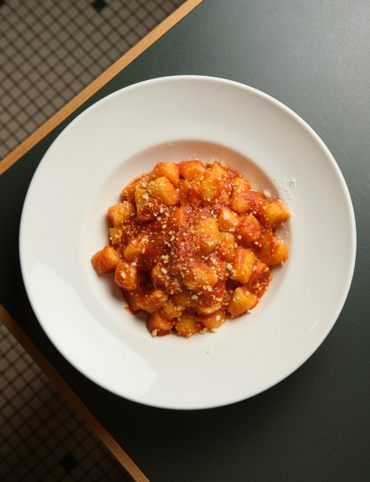
Gastro Obscura’s 10 Essential Places to Eat and Drink in Rome
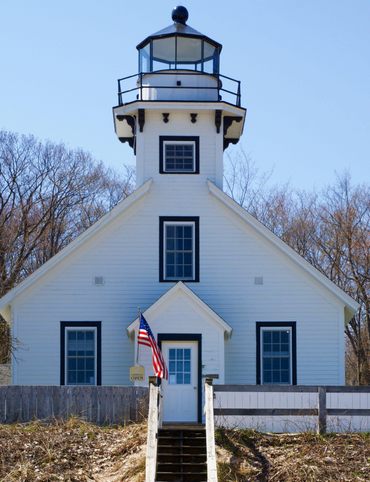
The Explorer’s Guide to Road Tripping Around the Great Lakes

10 National Parks That Are Perfect for a Road Trip

10 Out-of-This-World Places You Can Reach in Your Car

The Explorer’s Guide to Road Tripping Around Appalachia
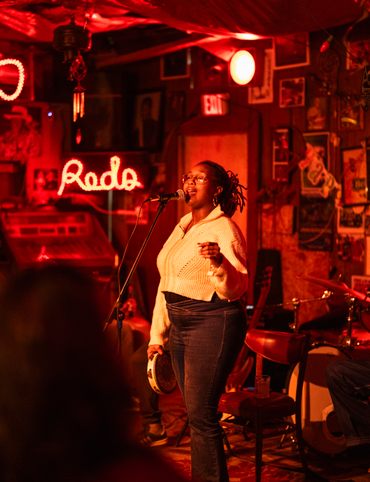
The Explorer’s Guide to Road Tripping Down Highway 61
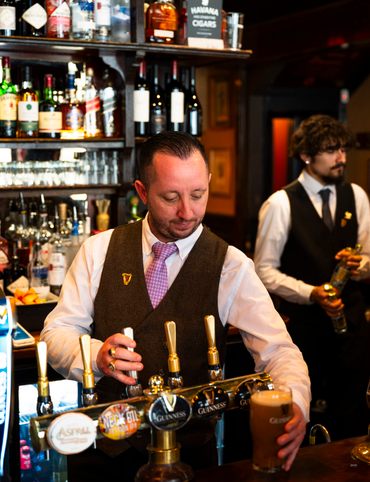
Gastro Obscura’s 10 Essential Stops on an Alternative London Pub Crawl

The Explorer’s Guide to Joshua Tree National Park
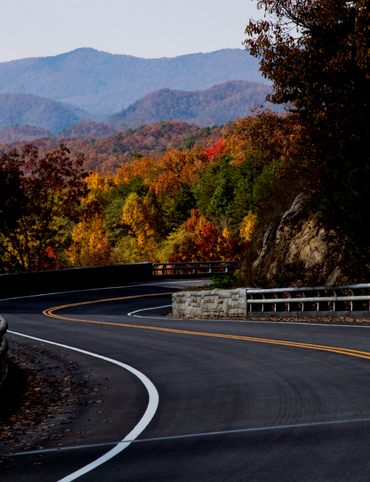
The Explorer’s Guide to the Great Smoky Mountains National Park

Cosmic Colorado: A Stargazer’s Guide to the Centennial State

The Explorer’s Guide to Banff National Park

10 Wild Places That Define West Virginia’s Landscape

The Ultimate Guide to Hidden Red Rocks: 10 Secret Passageways, Artifacts, and Ghost Stories
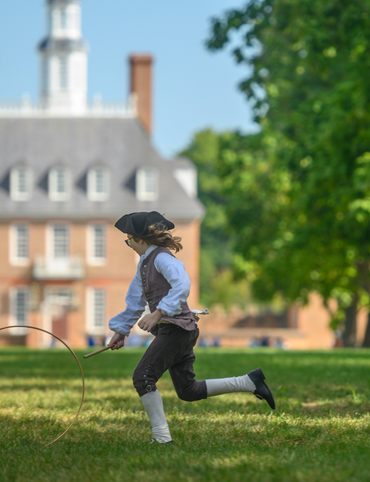
The Explorer’s Guide to Williamsburg, Virginia
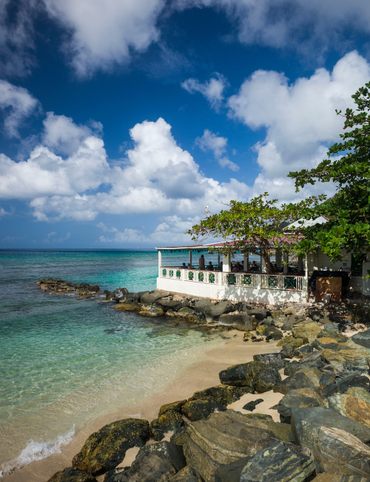
The Explorer’s Guide to the British Virgin Islands
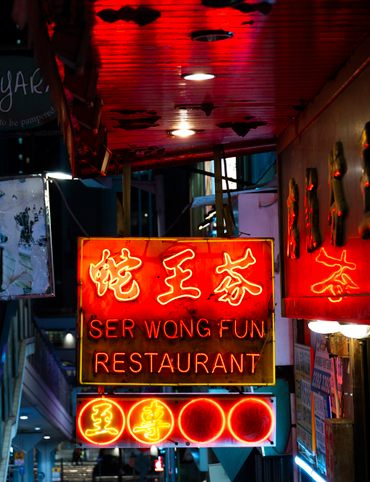
Gastro Obscura’s 10 Essential Places to Eat, Drink, and Shop in Hong Kong

A Denver Guide for National Park Lovers

Gastro Obscura’s 10 Essential Places to Eat and Drink in Oaxaca
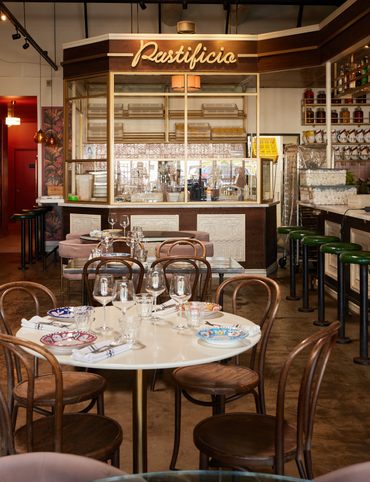
A Gastro Obscura Guide to Family-Friendly Dining in San Diego

The Explorer’s Guide to Outdoor Wonders In Maryland
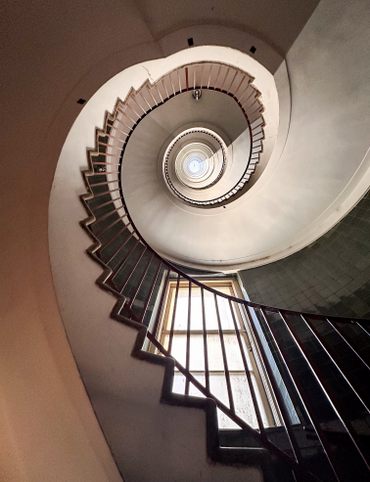
The Secret Lives of Cities: Ljubljana

From Cigar Boom to Culinary Gem: 10 Essential Spots in Ybor City

The Explorer’s Guide to Wyoming’s Captivating History

A Nature Lover’s Guide to Sarasota: 9 Wild & Tranquil Spots

California’s Unbelievable Landscapes: A Guide to Nature’s Masterpieces

The Ultimate California Guide to Tide Pools and Coastal Marine Life

Explore California on Foot: Nature’s Year-Round Playground

Mardi Gras 9 Ways: Parades, Cajun Music, And Courirs Across Louisiana

The Explorer’s Guide to Winter in Germany

Ancient California: A Journey Through Time and Prehistoric Places

The Wildest West: Explore California’s Ghost Towns and Gold Fever Legacy
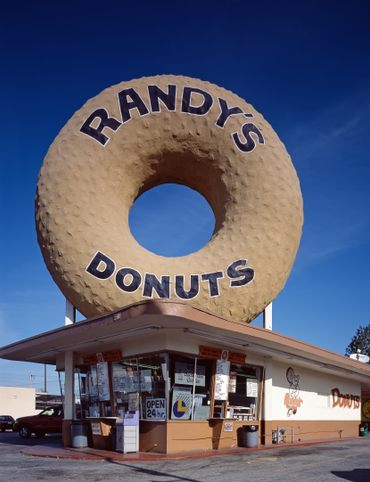
Sweet California: A Culinary Guide to Tasty Treats Across the State

Sea of Wonders: An Itinerary Through California’s Stunning Shoreline
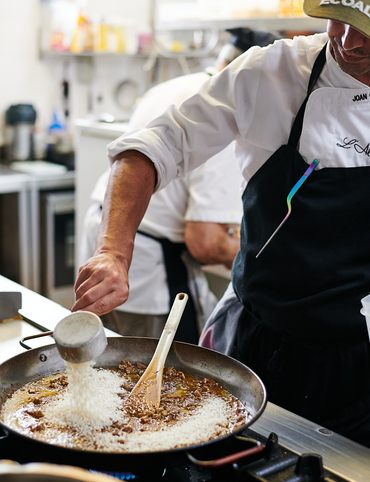
10 Places to Taste Catalonia’s Gastronomic Treasures

Atlas Obscura’s Guide to Palm Springs
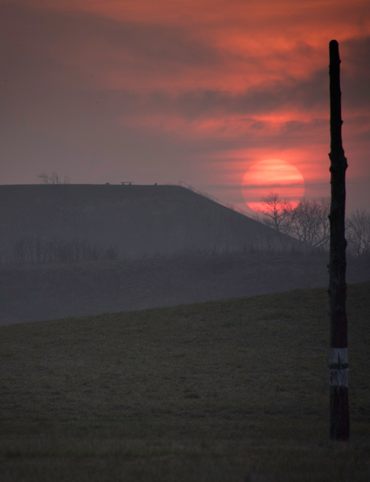
Atlas Obscura’s Guide to the 10 Most Mystifying Places in Illinois

10 Fascinating Sites That Bring Idaho History to Life
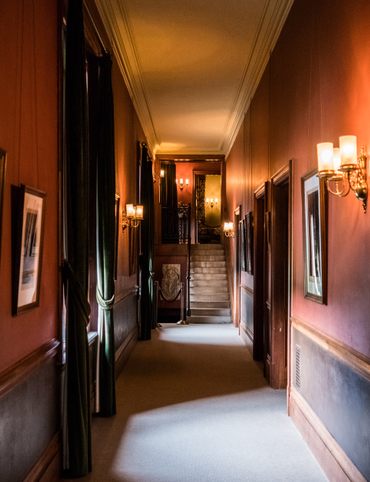
North Carolina's Paranormal Places, Scary Stories, & Local Haunts
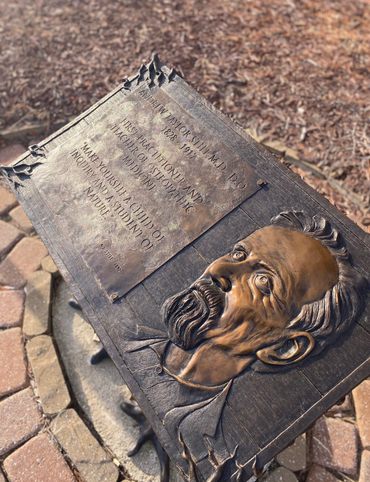
Exploring Missouri’s Legends: Unveiling the Stories Behind the State’s Iconic Figures

These Restaurants Are Dishing Out Alabama’s Most Distinctive Food
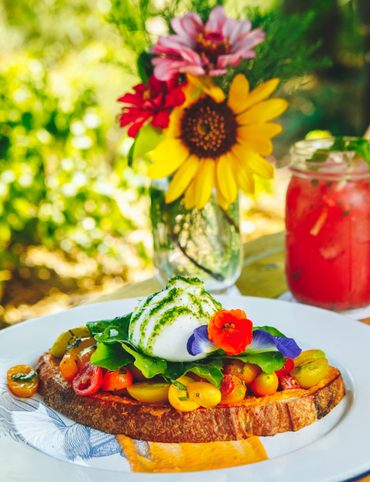
A Gastro Obscura Guide to Los Cabos

9 Watery Wonders on Florida’s Gulf Coast

Discover the Surprising and Hidden History of Monterey County

Gastro Obscura’s Guide to Eating Your Way Through Charlotte

Talimena Scenic Byway: 6 Essential Stops for Your Arkansas Road Trip

9 Amazing Arkansas Adventures Along the Scenic 7 Byway

The Explorer's Guide to Highway 36: The Way of American Genius
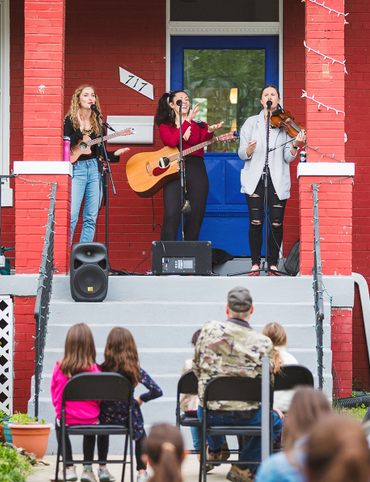
A Behind-the-Scenes Guide to DC’s Art and Music

9 Places Near Las Vegas For a Different Kind of Tailgate
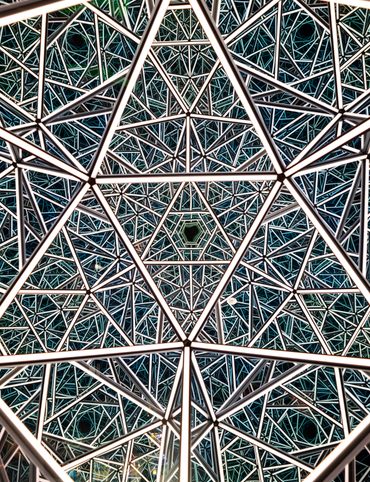
10 Places to See Amazing Art on Florida's Gulf Coast

8 Reasons Why You Should Visit the Bradenton Area

A Music Lover’s Guide to New Orleans

Gastro Obscura’s Guide to Sipping Wine in Catalonia
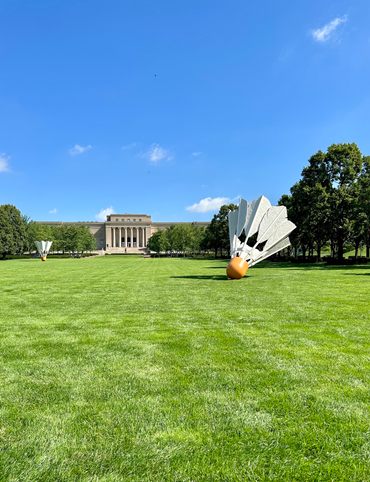
9 Hidden Wonders in the Heart of Kansas City

10 Unexpected Delights of Vermont's Arts and Culture Scene
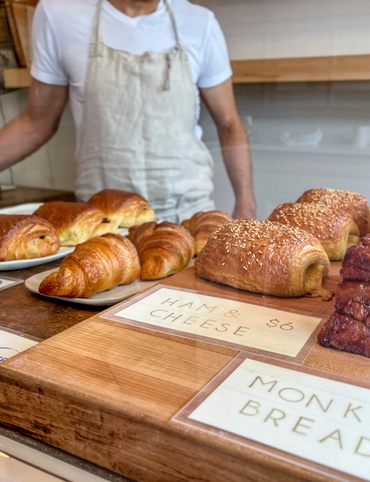
Gastro Obscura’s Guide to Eating Through Maine
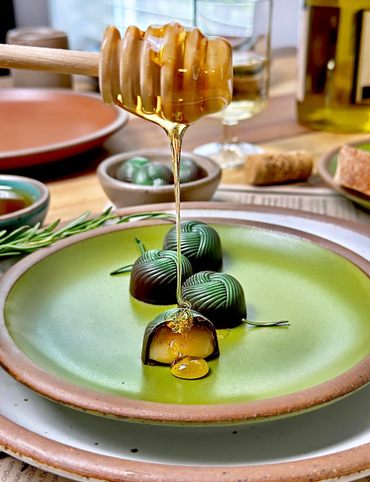
The Gastro Obscura Guide to Asheville Area Eats
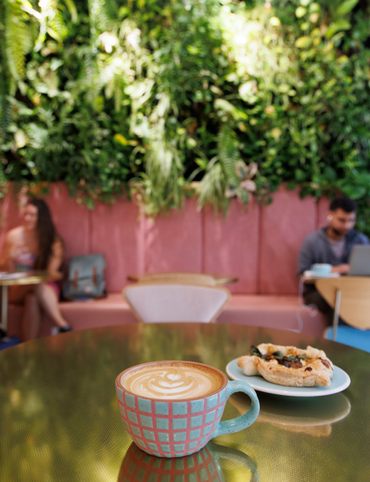
Gastro Obscura’s Guide to St. Pete/Clearwater

9 Hidden Wonders in Eastern Colorado

7 Places to Experience Big Wonder in Texas
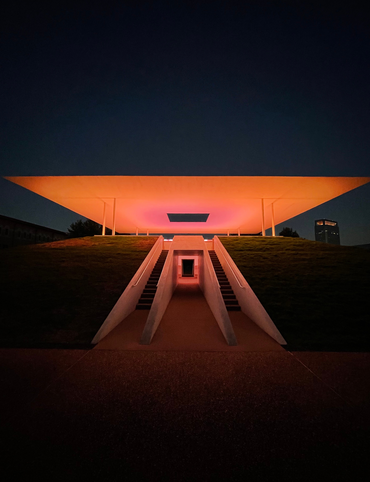
8 Out-There Art Destinations in Texas

6 Ways To See Texas Below the Surface

9 Places to Dive Into Fresh Texas Waters

7 Ways to Explore Music (and History) in Texas
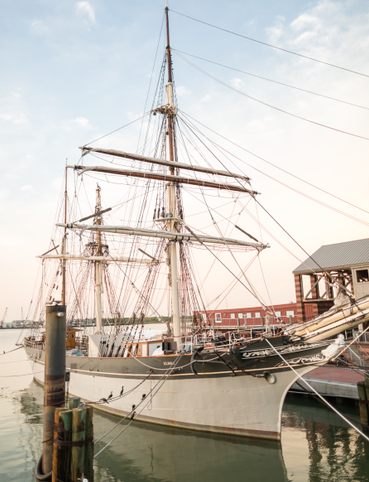
8 Ways to Discover Texas’ Rich History

The Explorer’s Guide to the Northern Territory, Australia
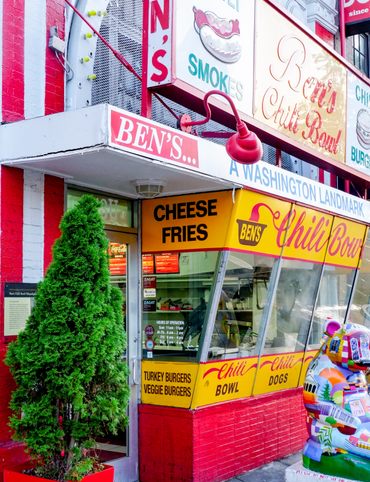
The Explorer's Guide to U Street Corridor

Gastro Obscura Guide to Southern Eats
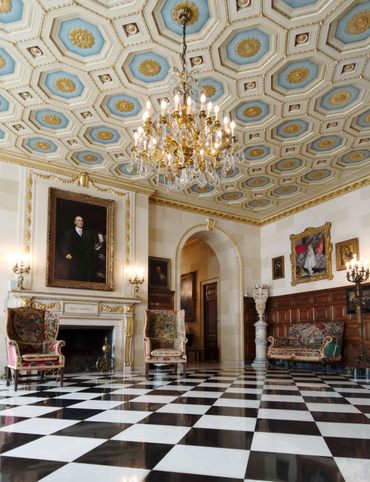
Only In Delaware

The Secret History & Hidden Wonders of Charlotte, North Carolina

Exploring Colorado's Historic Hot Springs Loop
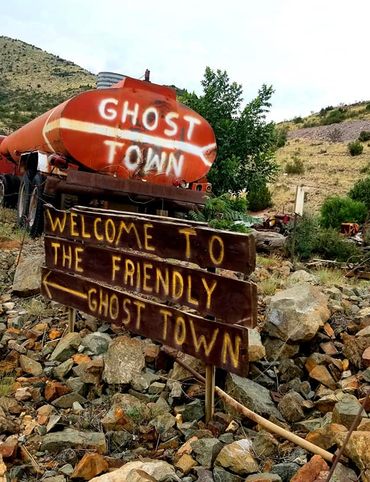
These 8 Arizona Ghost Towns Will Transport You to the Wild West

A Guide to Arizona’s Most Striking Natural Wonders
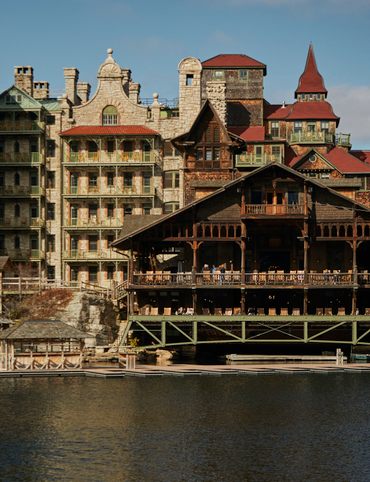
The Explorer's Guide to Hudson Valley, New York

Discover the Endless Beauty of the Pine Tree State

Travel to New Heights Around the Pine Tree State

8 Historical Must-Sees in Granbury, Texas
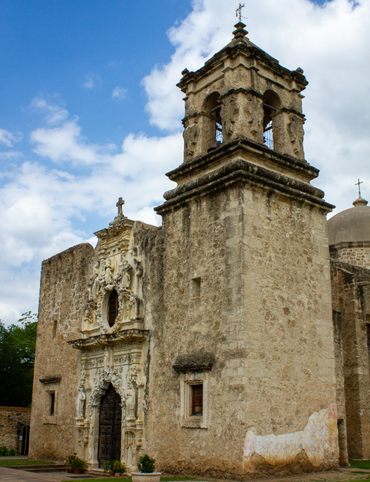
7 Creative Ways to Take in San Antonio’s Culture
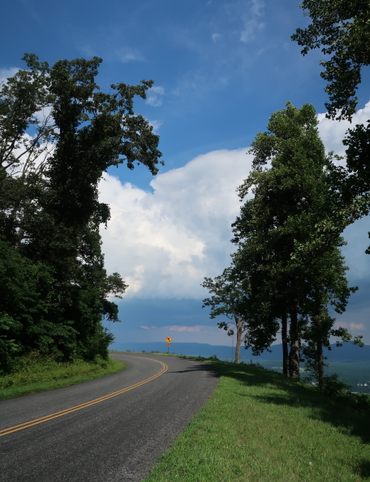
Eat Across the Blue Ridge Parkway
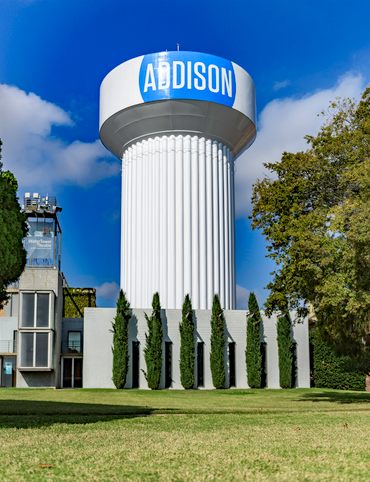
6 Ways to Absorb Addison, Texas’ Arts and Culture

6 Ways to Take in the History of Mesquite, Texas
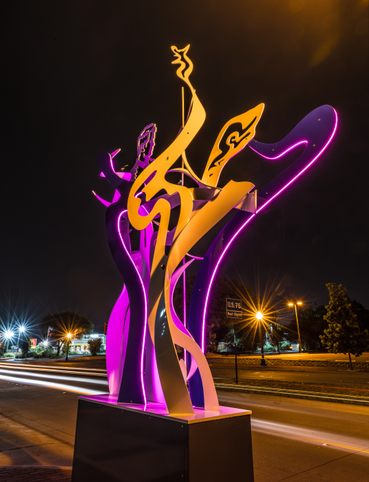
6 Ways to Soak Up Plano’s Art and Culture
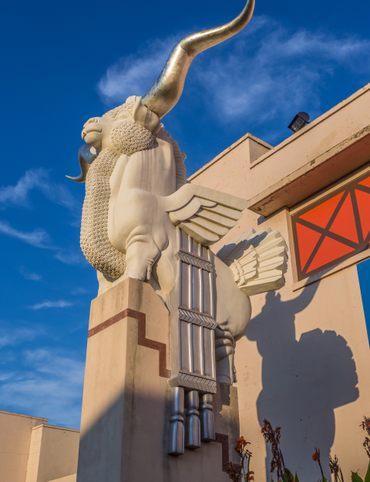
9 Dallas Spots for Unique Art and Culture
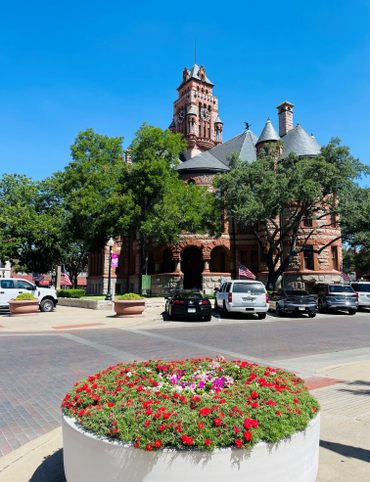
7 Sites of Small-Town History in Waxahachie, Texas

6 Natural Wonders to Discover in Austin, Texas

Discover the Secrets of Colorado’s Mountains and Valleys

A Road Trip Into Colorado’s Prehistoric Past
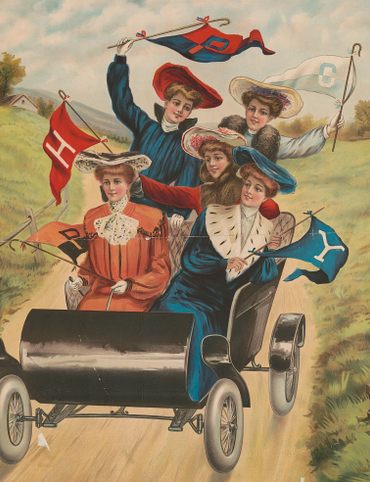
A Feminist Road Trip Across the U.S.
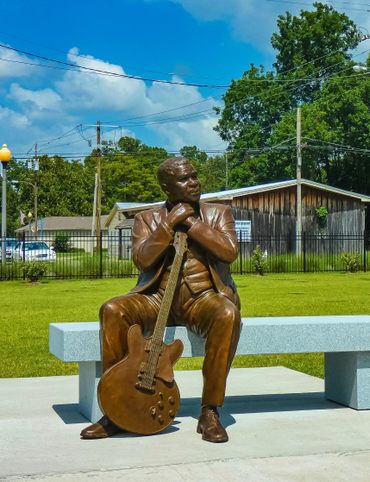
All Points South

Asheville: Off the Beaten Path
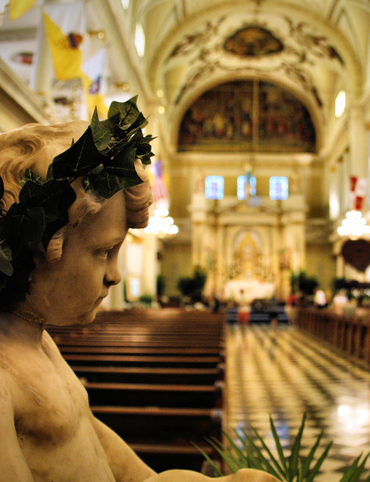
Restless Spirits of Louisiana
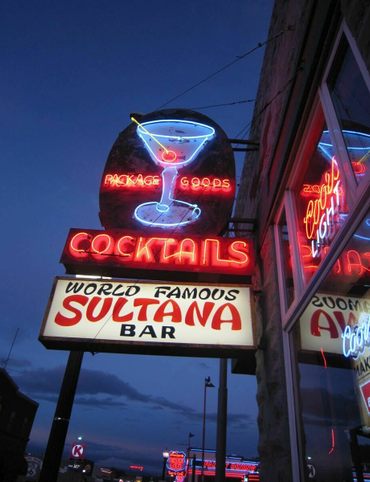
Eat Across Route 66
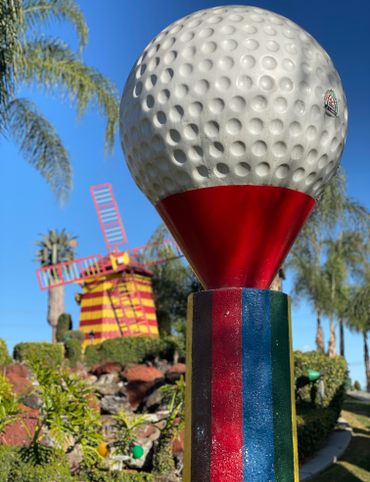
18 Mini Golf Courses You Should Go Out of Your Way to Play

4 Underwater Wonders of Florida
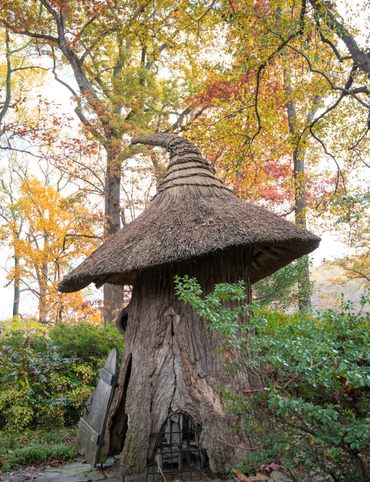
6 Spots Where the World Comes to Delaware

Study Guide: Road Trip from Knoxville to Nashville
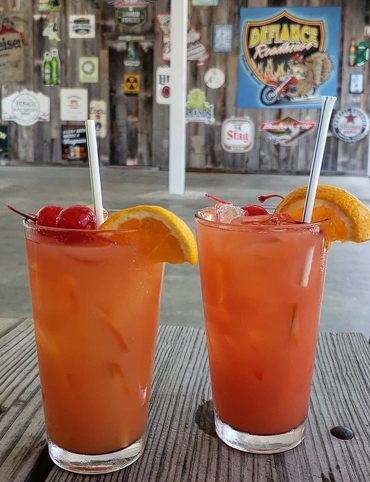
6 Wondrous Places to Get Tipsy in Missouri

Rogue Routes: The Road to Pikes Peak

Rogue Routes: The Road to Carhenge

4 Pop-Culture Marvels in Iowa

7 Stone Spectacles in Georgia

6 Stone-Cold Stunners in Idaho
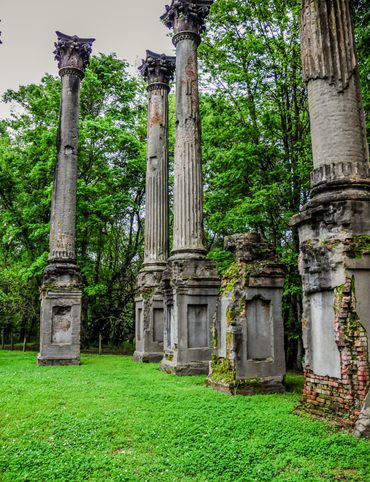
8 Historic Spots to Stop Along Mississippi's Most Famous River
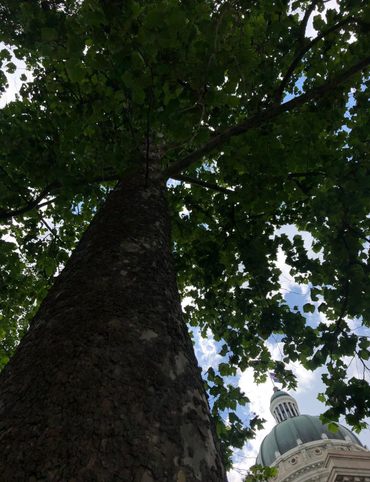
5 Incredible Trees You Can Find Only in Indiana
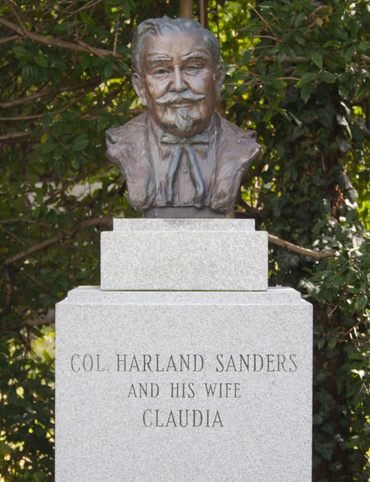
5 Famous and Delightfully Obscure Folks Buried in Kentucky

4 Wacky Wooden Buildings in Wyoming
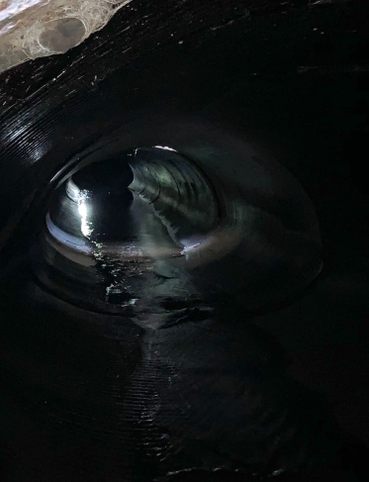
7 Spots to Explore New Jersey’s Horrors, Hauntings, and Hoaxes
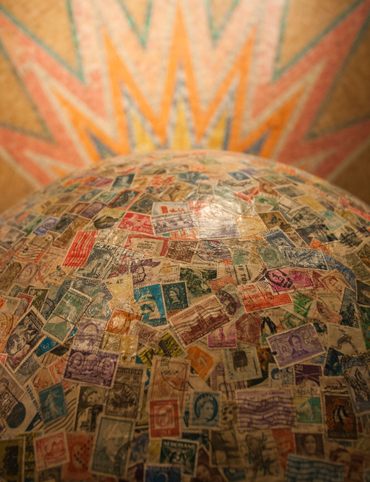
4 Out-There Exhibits Found Only in Nebraska

6 Sweet and Savory Snacks Concocted in Utah
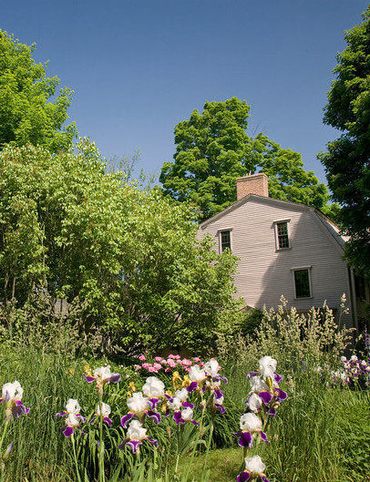
12 Places in Massachusetts Where Literature Comes to Life
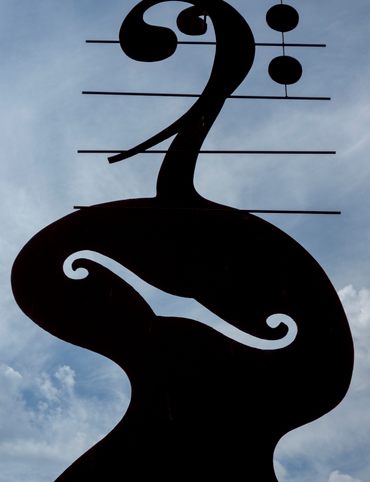
8 Places to Get Musical in Minnesota
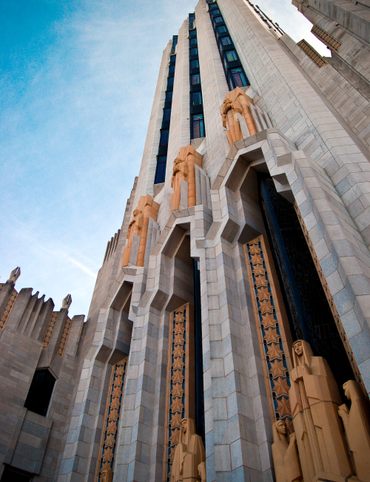
8 Buildings That Prove Oklahoma's an Eclectic Art Paradise

9 Stunning Scientific Sites in Illinois

5 Strange and Satanic Spots in New Hampshire
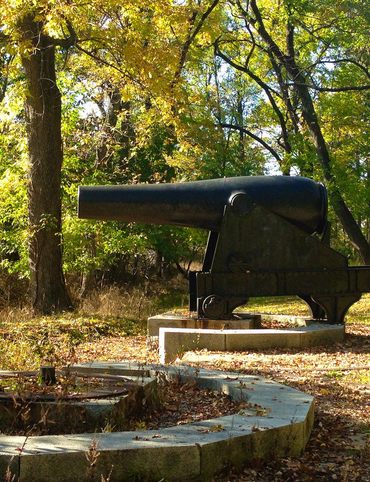
8 Historic Military Relics in Maryland
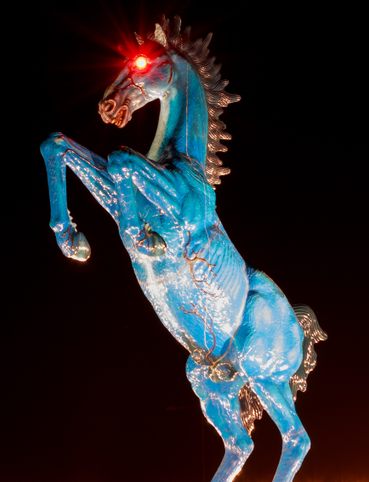
5 of Colorado's Least-Natural Wonders

Rogue Routes: The Road to Sky’s the Limit

6 Hallowed Grounds in South Carolina

9 Rocking Places in Vermont

Knoxville Study Guide
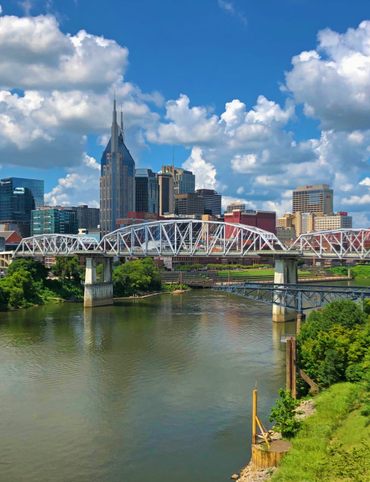
Nashville Study Guide

Rogue Routes: The Road to Camp Colton
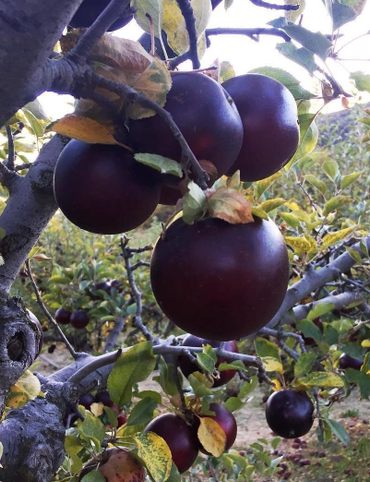
Black Apples and 6 Other Southern Specialties Thriving in Arkansas
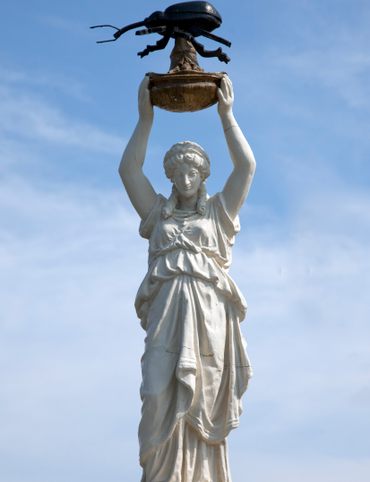
4 Monuments to Alabama’s Beloved Animals
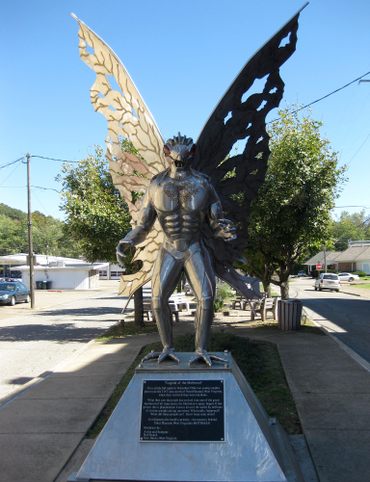
The Dark History of West Virginia in 9 Sites

11 Zany Collections That Prove Wisconsin's Quirkiness

7 Inexplicably Huge Animals in South Dakota
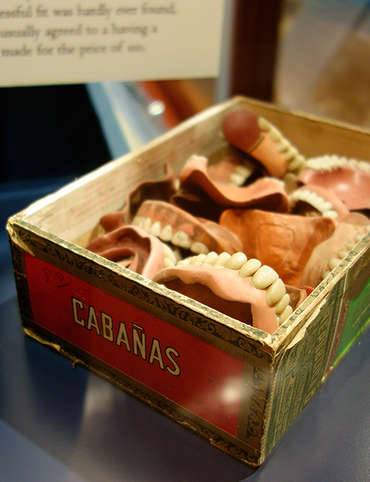
6 Fascinating Medical Marvels in Pennsylvania
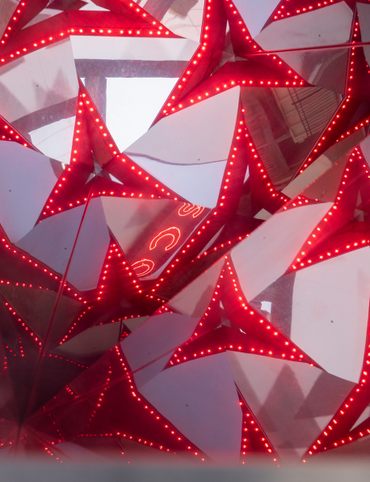
8 Places in Virginia That Aren’t What They Seem

7 Cool, Creepy, and Unusual Graves Found in North Carolina

7 of Montana's Spellbinding Stone Structures

9 of Oregon’s Most Fascinating Holes and Hollows

Take to the Skies With These 9 Gravity-Defying Sites in Ohio

9 Strange and Surreal Spots in Washington State

8 Watery Wonders in Hawaiʻi, Without Setting Foot in the Ocean
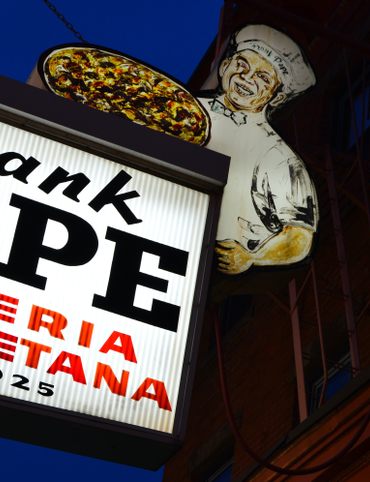
6 Unusual Eats Curiously Cooked Up in Connecticut

11 Close Encounters With Aliens and Explosions in New Mexico
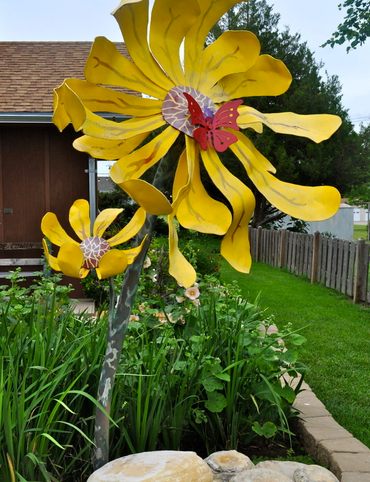
10 Places to Trip Way Out in Kansas
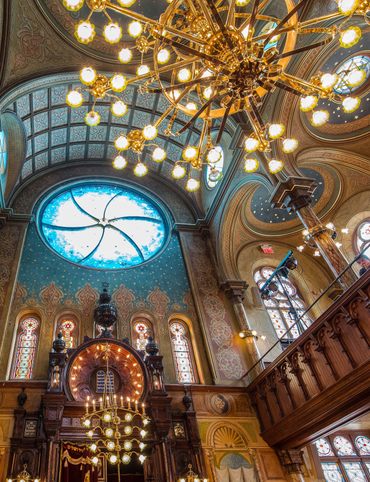
The Resilience of New York in 10 Remarkable Sites

7 Very Tall Things in Very Flat North Dakota

8 Blissfully Shady Spots to Escape the Arizona Sun
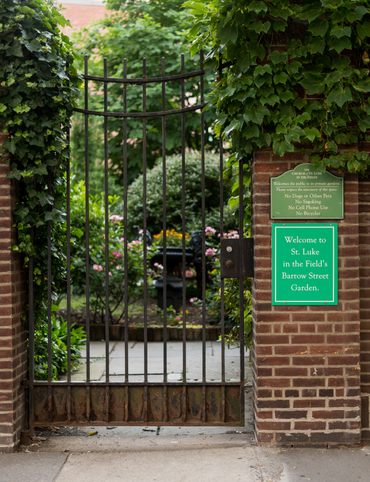
On the Run: NYC
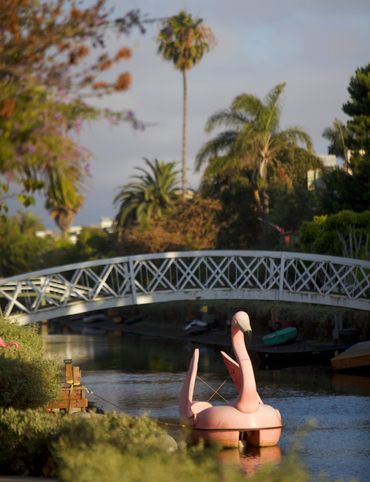
On the Run: Los Angeles

9 Surprisingly Ancient Marvels in Modern California

10 Art Installations That Prove Everything's Bigger in Texas
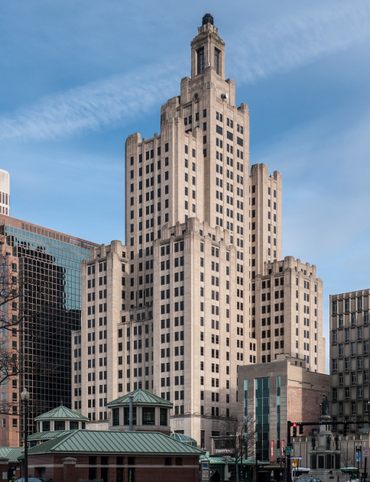
6 Huge Things in Tiny Rhode Island

7 Underground Thrills Only Found in Tennessee

Sink Into 7 of Louisiana's Swampiest Secrets

7 Mechanical Marvels in Michigan

11 Wholesome Spots in Nevada
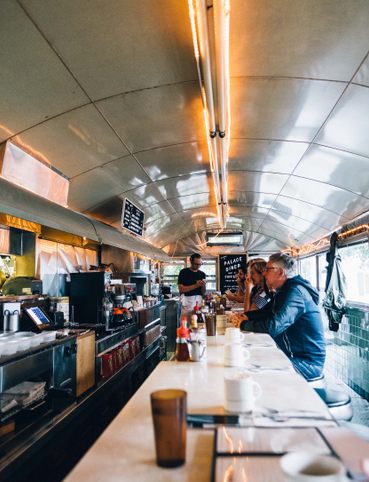
7 Places to Glimpse Maine's Rich Railroad History

11 Places Where Alaska Bursts Into Color

9 Places in D.C. That You're Probably Never Allowed to Go

2 Perfect Days in Pensacola
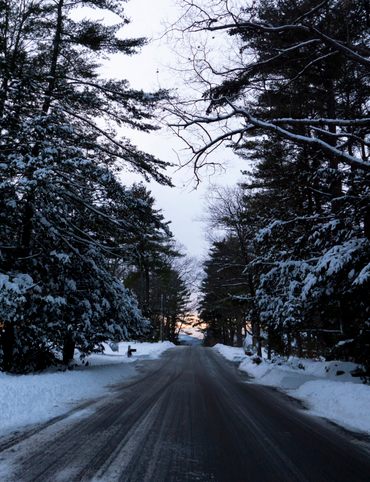
Rogue Routes: The Road to the Ice Castles

Taste of Tucson

North Iceland’s Untamed Coast

Hidden Edinburgh
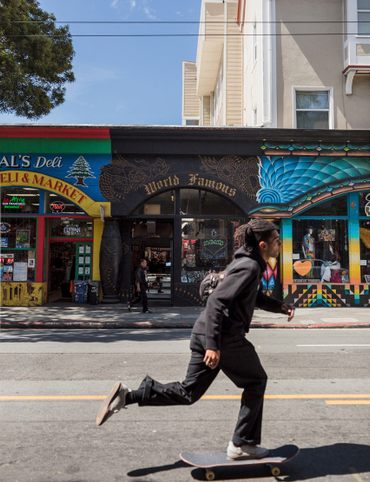
Hidden Haight-Ashbury
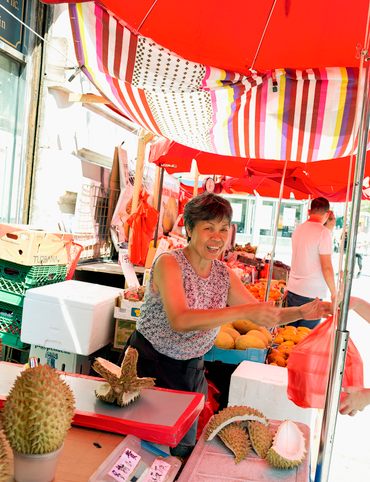
The Many Flavors of NYC’s Five Boroughs
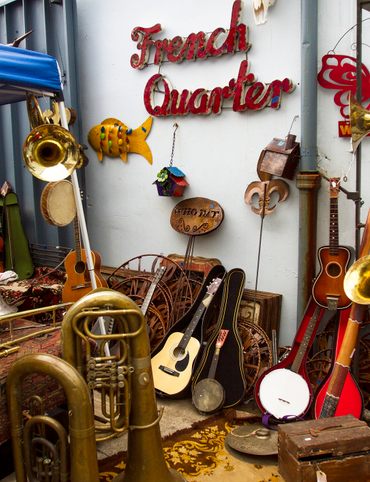
Hidden French Quarter
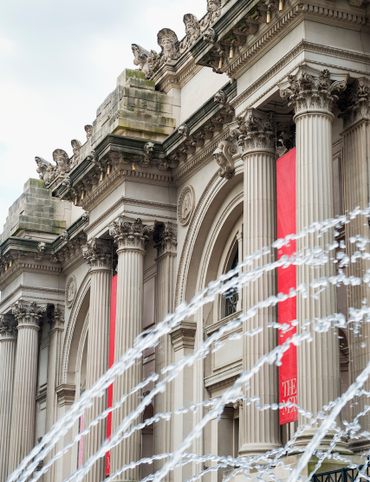
The Metropolitan Museum of Art
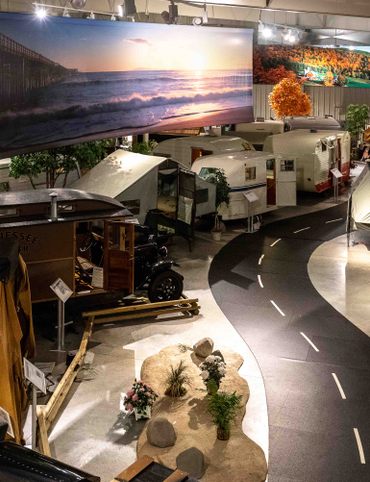
Motown to Music City Road Trip

Gulf Coast Road Trip

Hidden Coachella Valley
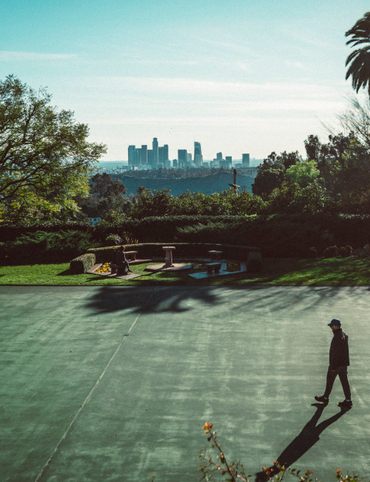
Highland Park

Venice
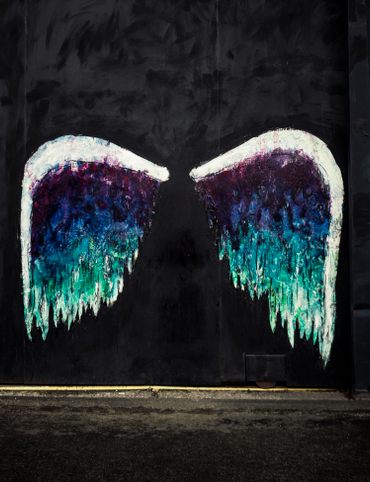
L.A.’s Downtown Arts District
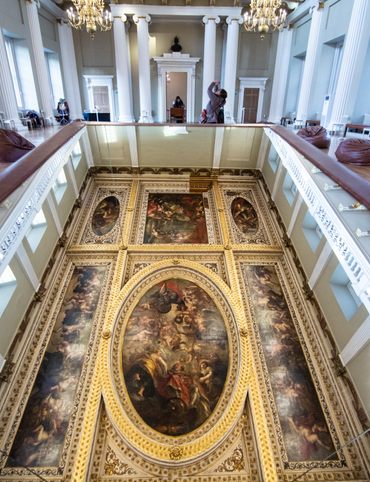
Hidden Trafalgar Square

Secrets of NYC’s Five Boroughs
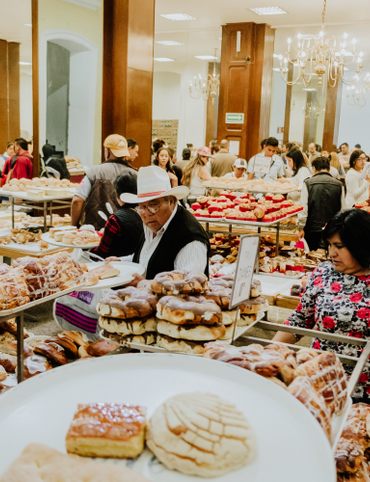
Mexico City's Centro Histórico

Hidden Hollywood
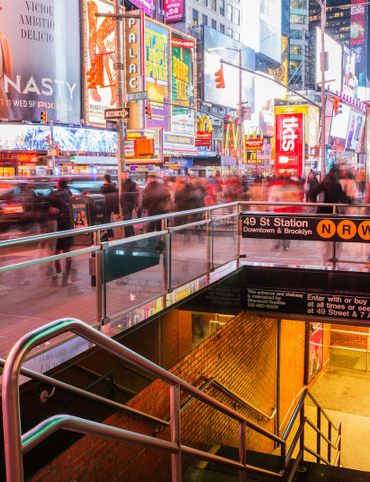
Hidden Times Square

Summer Radio Road-Trip
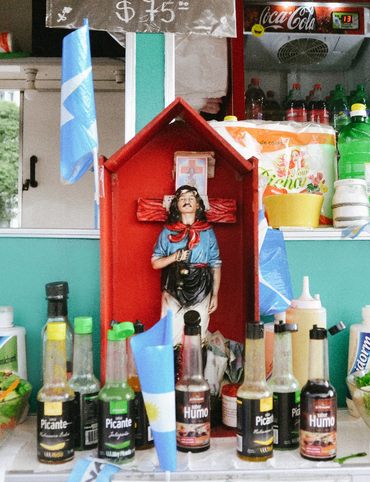
Buenos Aires
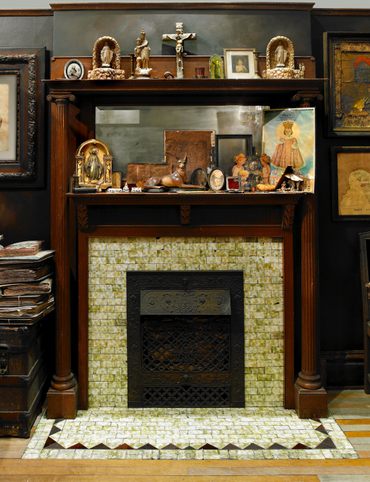
Chicago
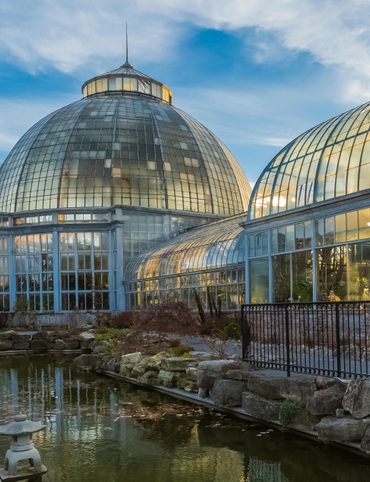
Detroit
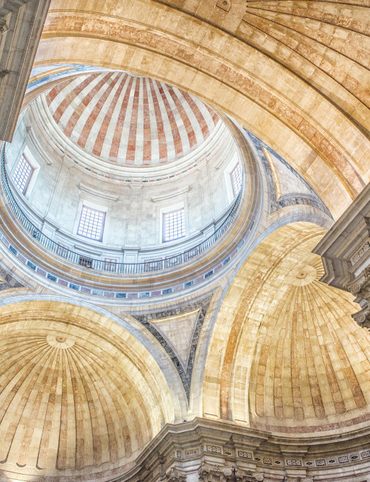
Lisbon

Miami
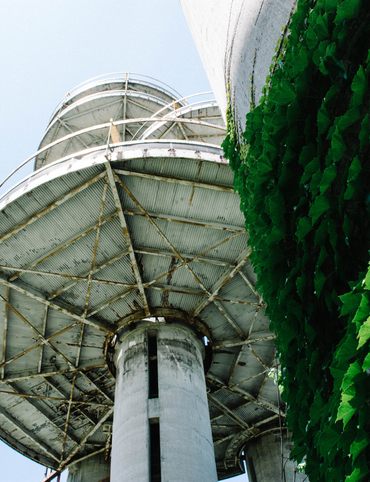
Queens

San Diego
